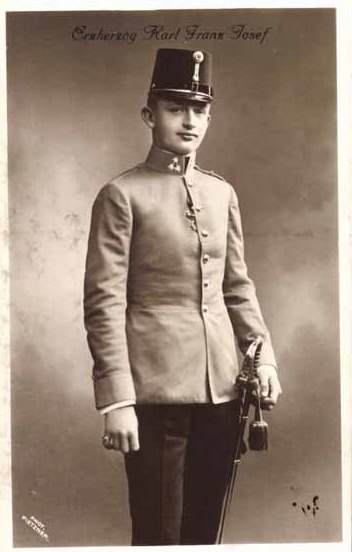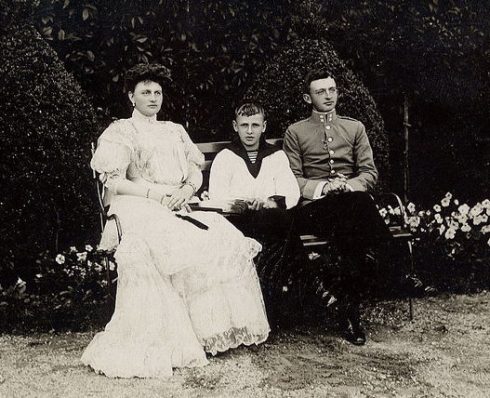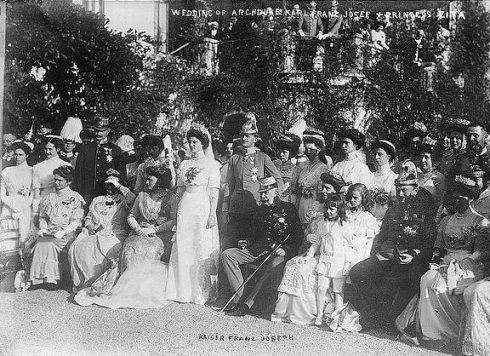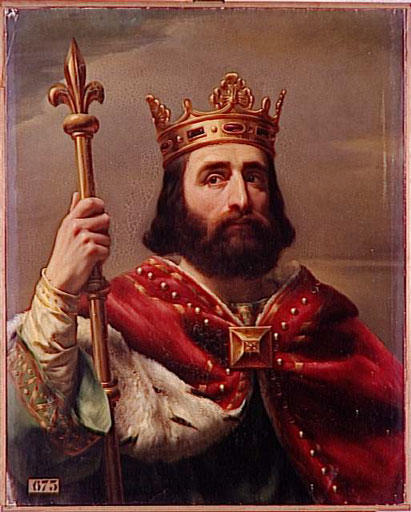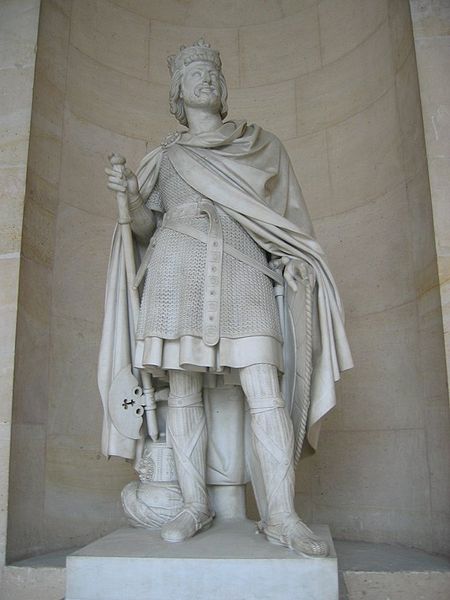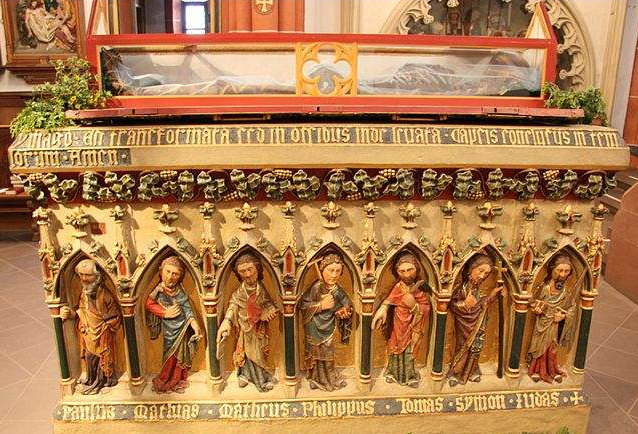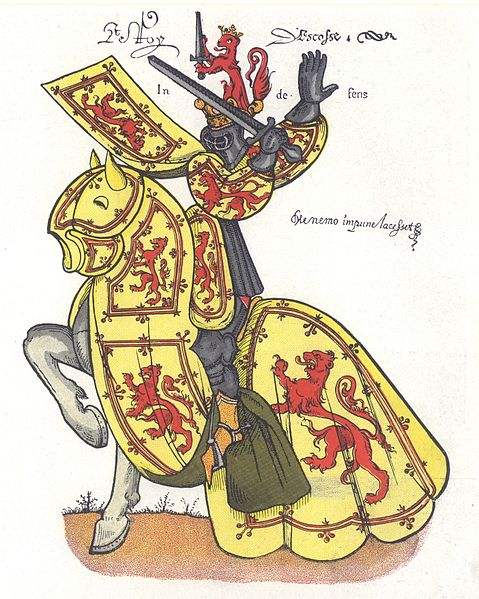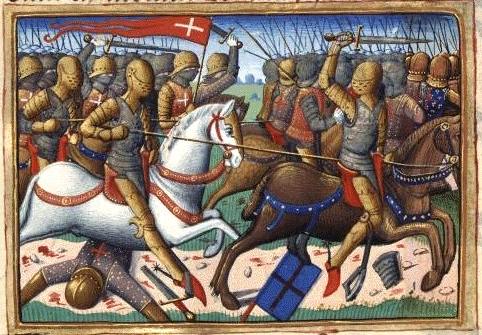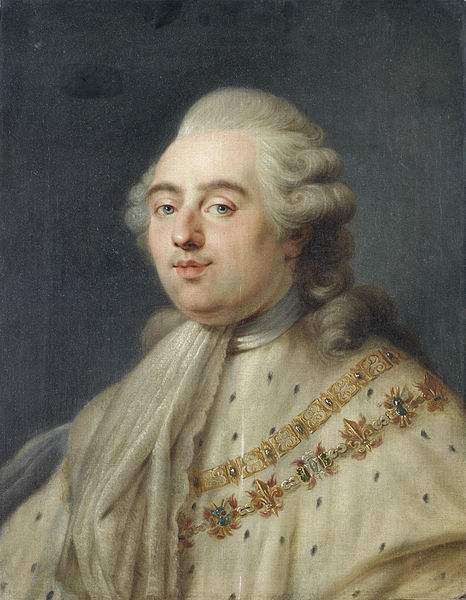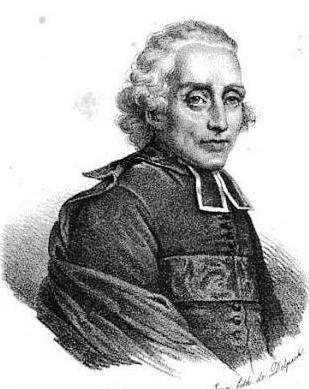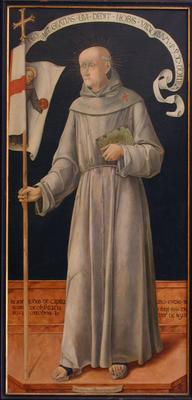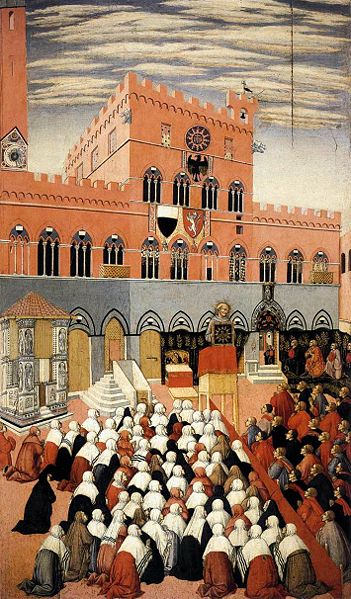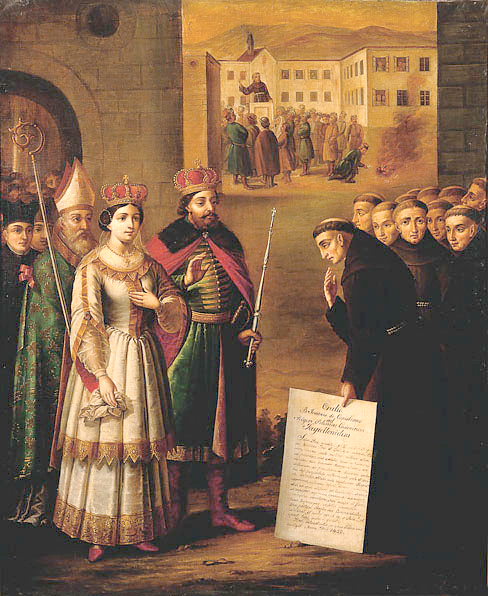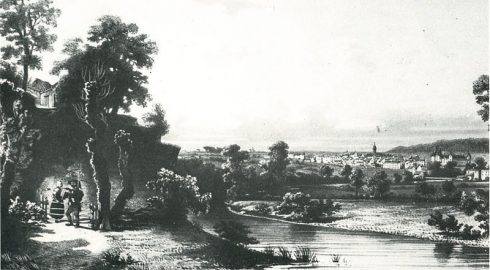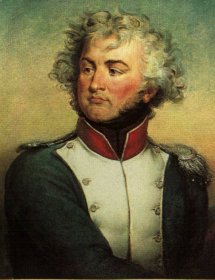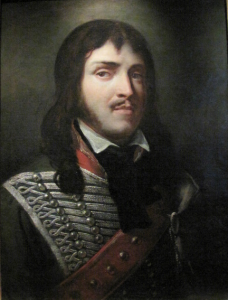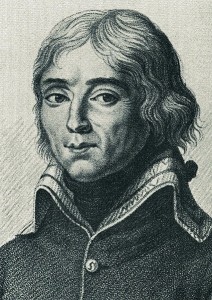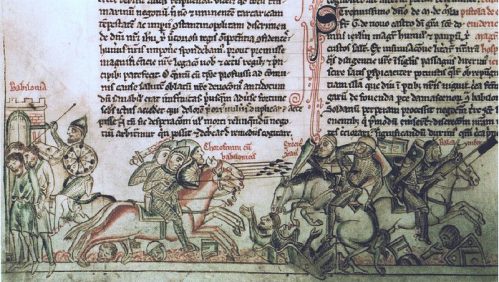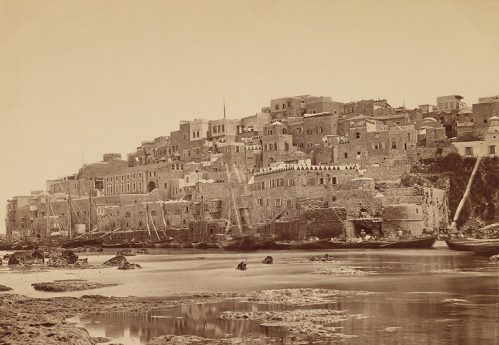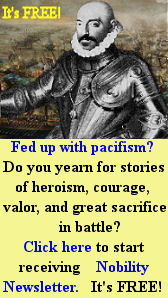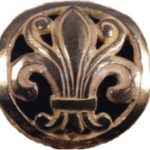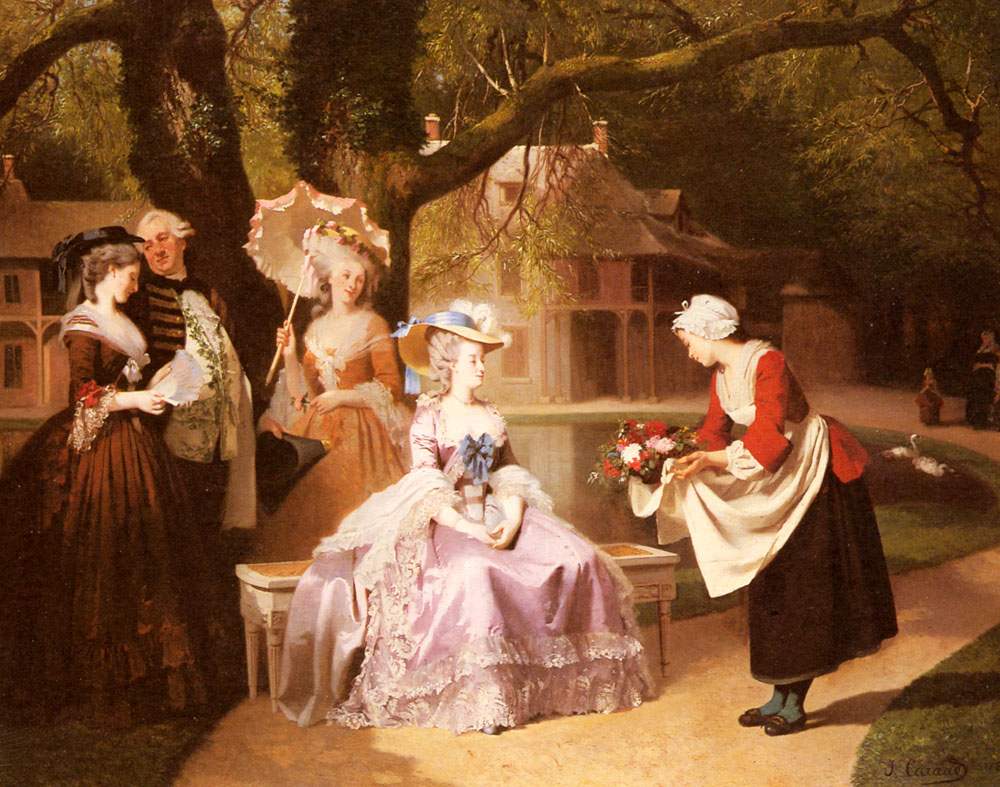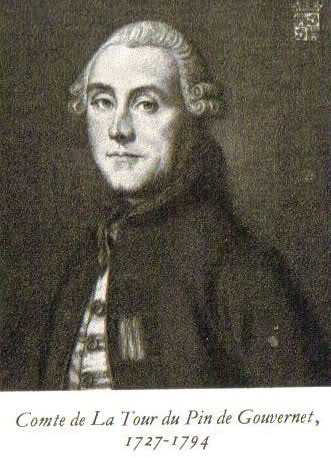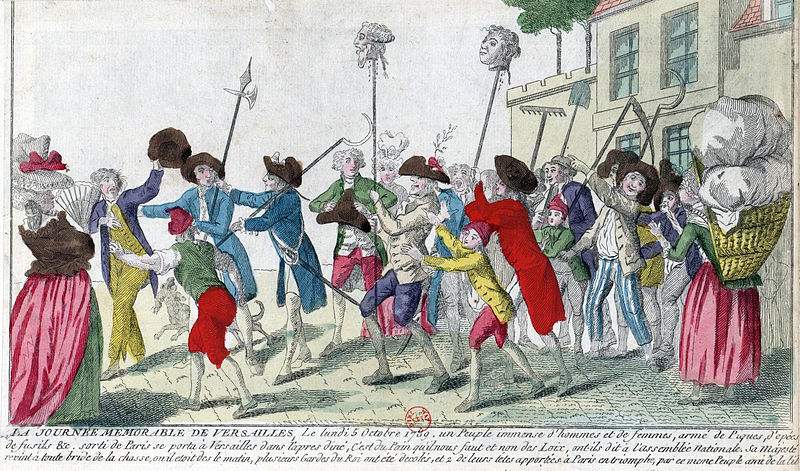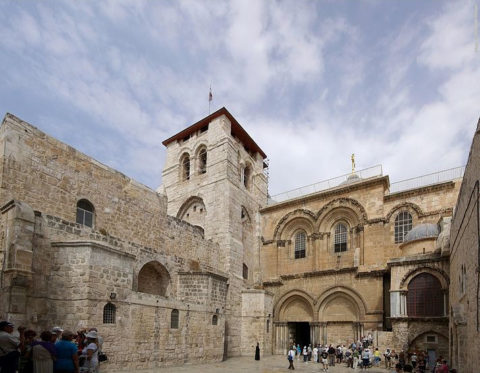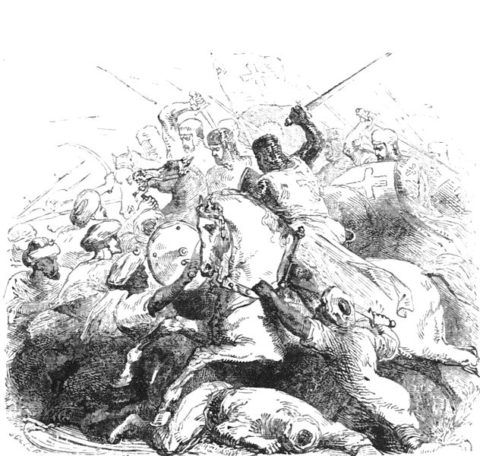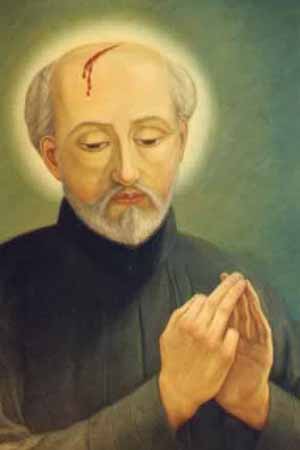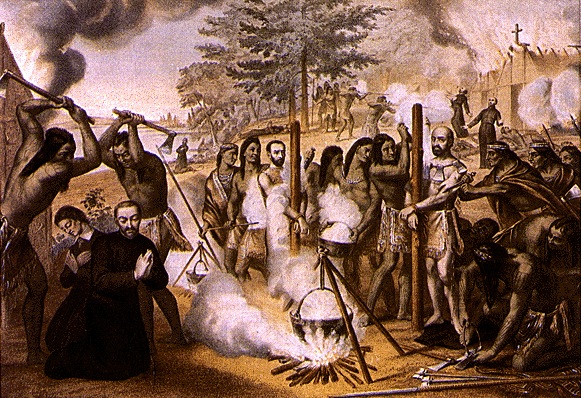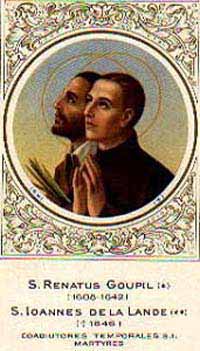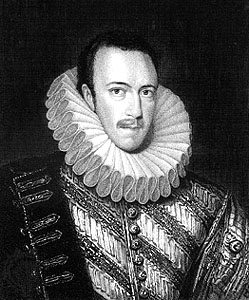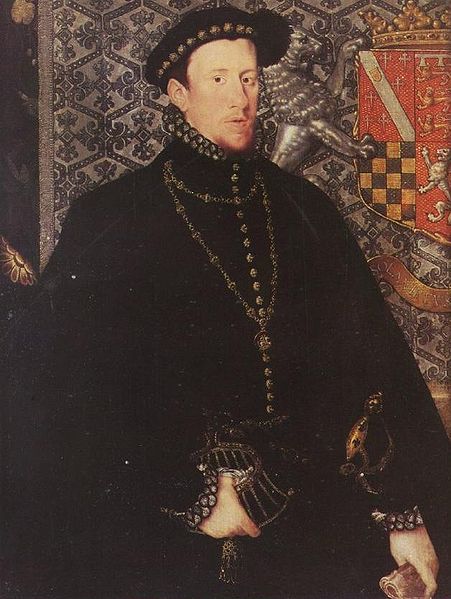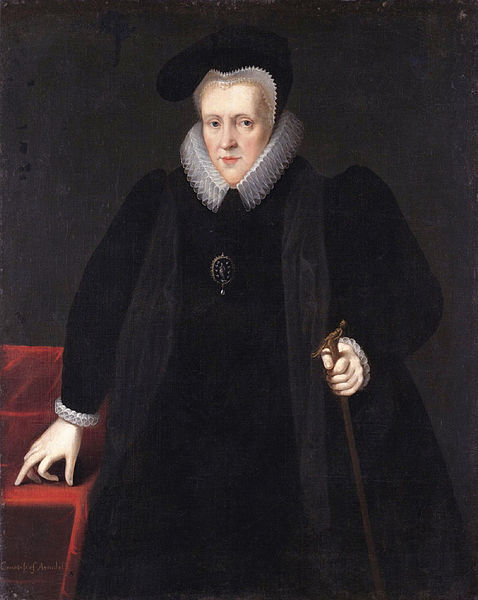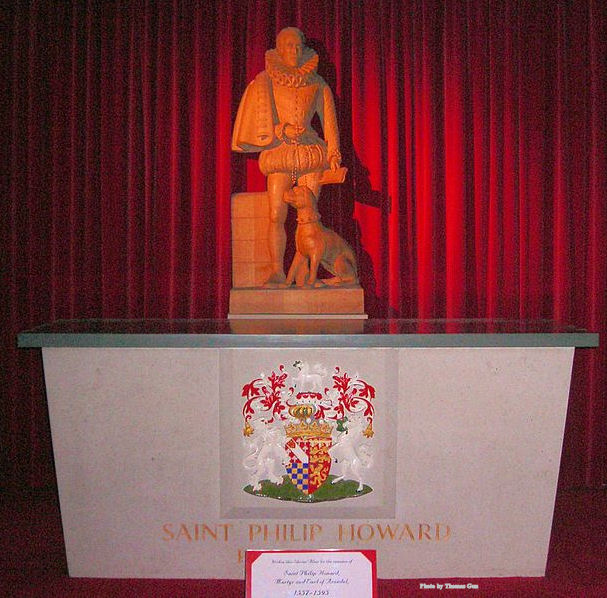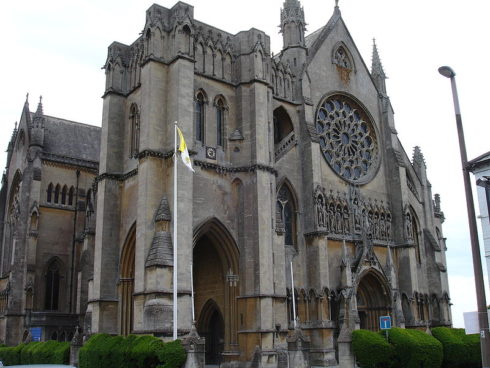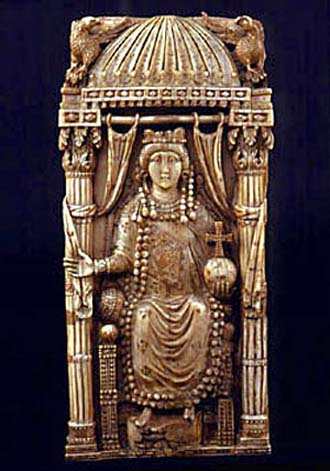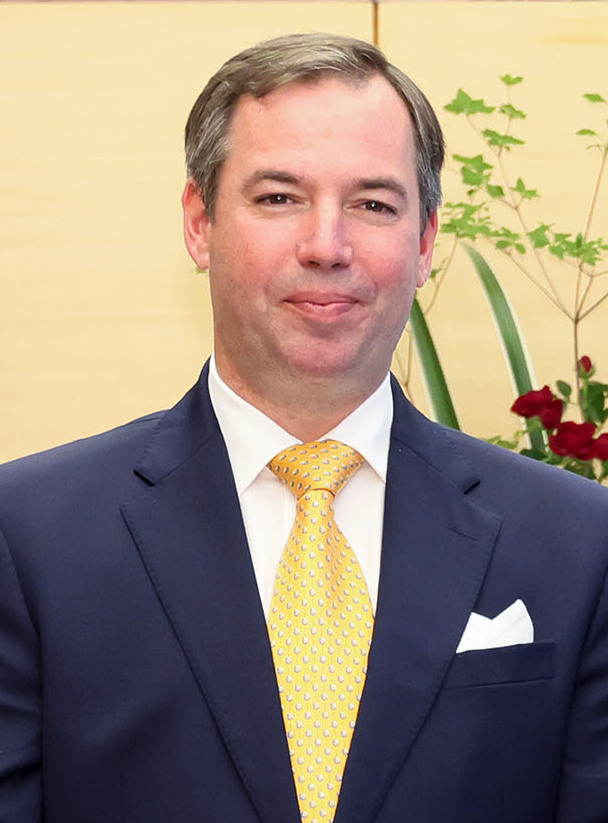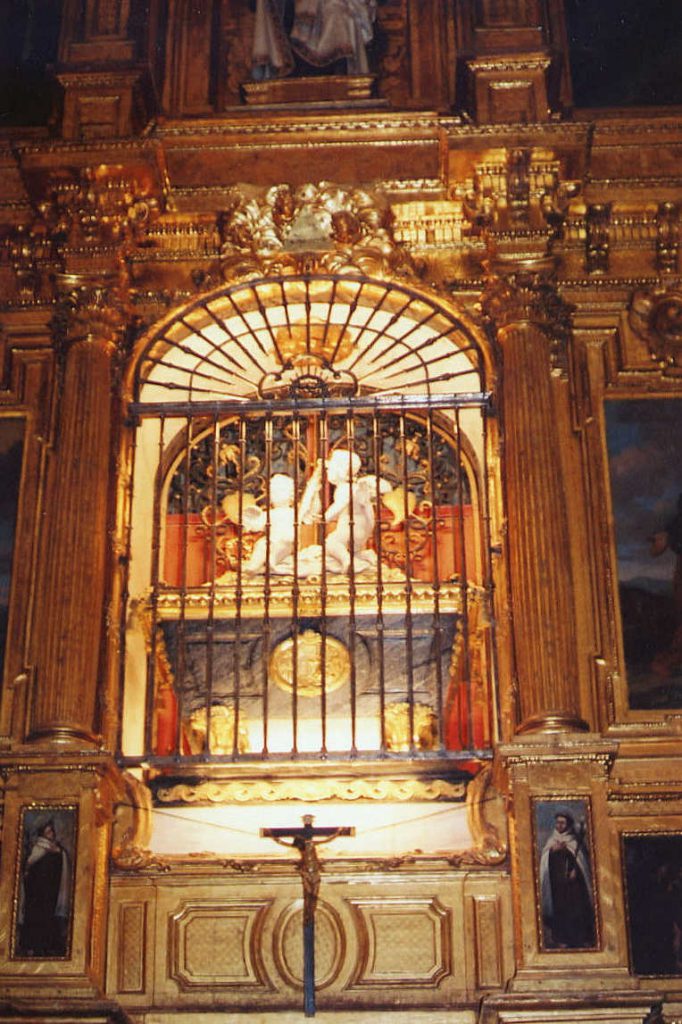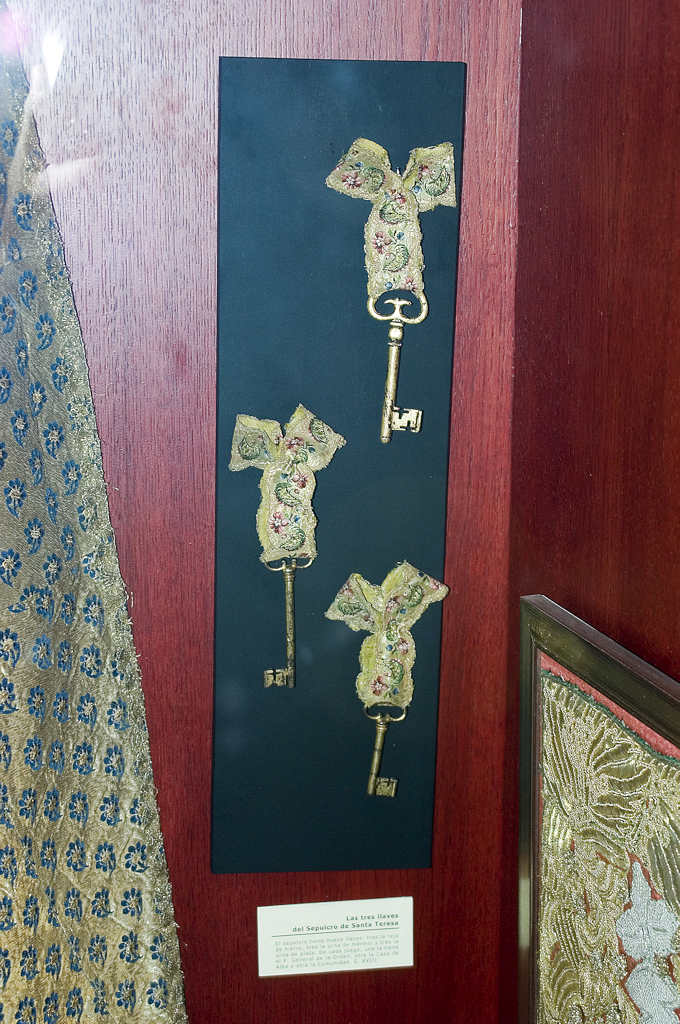St. Ignatius of Constantinople
Born about 799; died 23 October, 877; son of Emperor Michael I and Procopia. His name, originally Nicetas, was changed at the age of fourteen to Ignatius. Leo the Armenian having deposed the Emperor Michael (813), made Ignatius a eunuch and incarcerated him in a monastery, that he might not become a claimant to his father’s throne. While thus immured he voluntarily embraced the religious life, and in time was made an abbot. He was ordained by Basil, Bishop of Paros, on the Hellespont. On the death of Theophilus (841) Theodora became regent, as well as co-sovereign with her son, Michael III, of the Byzantine Empire. In 847, aided by the good will of the empress, Ignatius succeeded to the Patriarchate of Constantinople, vacant by the death of Methodius. The Emperor Michael III was a youthful profligate who found a worthy companion for his debauchery in Bardas, his maternal uncle. At the suggestion of the latter, Michael sought the assistance of Ignatius in an effort to force Theodora to enter a convent, in the hope of securing for himself an undivided authority and a free rein for his profligacy. The patriarch indignantly refused to be a party to such an outrage. Theodora, however, realizing the determination of her son to possess at any cost an undivided rule, voluntarily abdicated. This refusal to participate in his iniquitous schemes, added to a courageous rebuke, which Ignatius had administered to Bardas for having repudiated his wife and maintained incestuous intercourse with his daughter-in-law, determined the Cæsar to bring about the disgrace of the patriarch.
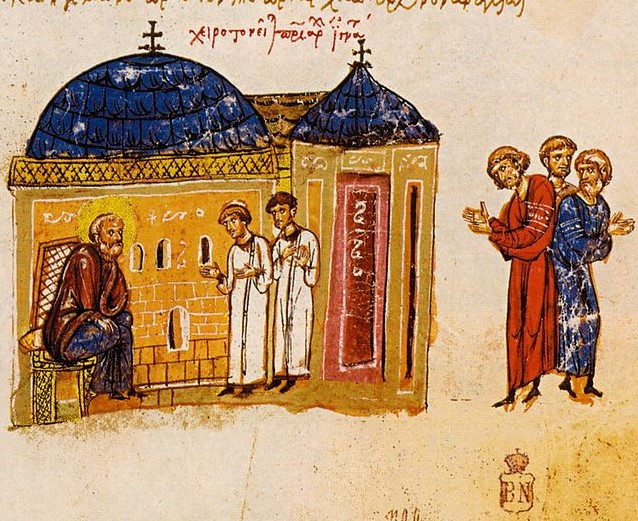
The appointment of the Patriarch St. Ignatius of Constantinople.
An insignificant revolt, led by a half-witted adventurer, having broken out, Bardas laid the blame at the door of Ignatius, and having convinced the emperor of the truth of his accusation, brought about the banishment of the patriarch to the island of Terebinthus. In his exile he was visited by the emissaries of Bardas, who sought to induce him to resign his patriarchal office. Their mission failing, they loaded him with every kind of indignity. Meanwhile a pseudo-synod, held under the direction of Gregory of Syracuse, an excommunicated bishop, deposed Ignatius from his see. Bardas had selected his successor in the person of Photius, a layman of brilliant parts, and a patron of learning, but thoroughly unscrupulous. He stood high in the favour of the emperor, for whom he acted as first secretary of state. This choice having been approved by the pseudo-synod, in six days Photius ran the gamut of ecclesiastical orders from the lectorate to the episcopate. To intensify the feeling against Ignatius, and thereby strengthen his own position, Photius charged the exiled bishop with further acts of sedition. In 859 another synod was called to further the interests of Photius, by again proclaiming the deposition of Ignatius. But not all the bishops participated in these disgraceful proceedings. Some few, with the courage of their episcopal office, denounced Photius as a usurper of the patriarchal dignity. Convinced that he could enjoy no sense of security in his office without the sanction of the pope, Photius sent an embassy to Rome for the purpose of pleading his cause. These ambassadors represented that Ignatius, worn out with age and disease, had voluntarily retired to a monastery; and that Photius had been chosen by the unanimous election of the bishops. With an affectation of religious zeal, they requested that legates be sent to Constantinople to suppress a recrudescence of Iconoclasm, and to strengthen religious discipline.
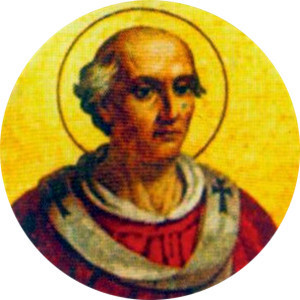
Pope Saint Nicholas I
Nicholas I sent the required legates, but with instructions to investigate the retirement of Ignatius and to treat with Photius as with a layman. These instructions were supplemented by a letter to the emperor, condemning the deposition of Ignatius. But the legates proved faithless. Intimidated by threats and quasi-imprisonment, they agreed to decide in favour of Photius. In 861 a synod was convened, and the deposed patriarch cited to appear before it as a simple monk. He was denied the permission to speak with the delegates. Citing the pontifical canons to prove the irregularity of his deposition, he refused to acknowledge the authority of the synod and appealed to the pope. But his pleading was in vain. The prearranged programme was carried through and the venerable patriarch was condemned and degraded. Even after this, the relentless hatred of Bardas pursued him, in the hope of wringing from him the resignation of his office. Finally an order for his death was issued, but he had fled to safety. The legates returning to Rome, merely announced that Ignatius had been canonically deposed and Photius confirmed. The patriarch, however, succeeded in acquainting the pope, through the archimandrite Theognostus, with the unlawful proceedings taken against him. To the imperial secretary, therefore, whom Photius had sent to him to obtain the approval of his acts, the pope declared that he would not confirm the synod that had deposed Ignatius. In a letter addressed to Photius, Nicholas I recognized Ignatius as the legitimate Patriarch of Constantinople. At the same time a letter was dispatched to the eastern patriarchs, forbidding them to recognize the usurper. After another unsuccessful effort to obtain papal confirmation, Photius gave vent to his fury in a ludicrous declaration of excommunication against the Roman Pontiff.

Painting showing the death of St. Ignatius from the Menologion of Basil II
In 867 the Emperor Michael was assassinated by Basil the Macedonian, who succeeded him as emperor. Almost his first official act was to depose Photius and recall Ignatius, after nine years of exile and persecution, to the patriarchate of Constantinople, 23 November, 867. Adrian II, who had succeeded Nicholas I, confirmed both the deposition of Photius and the restoration of Ignatius. At the recommendation of Ignatius, Adrian II, on 5 October, 869, convoked the Eighth cumenical Council. All the participants of this council were obliged to sign a document approving the papal action in regard to Ignatius and Photius. Ignatius lived ten years after his restoration, in the peaceful exercises of the duties of his office. He was buried at St. Sophia, but afterwards his remains were interred in the church of St. Michael, near the Bosphorus. The Roman Martyrology (23 Oct.) says: “At Constantinople St. Ignatius, Bishop, who, when he had reproved Bardas the Cæsar for having repudiated his wife, was attacked by many injuries and sent into exile; but having been restored by the Roman Pontiff Nicholas, at last he went to his rest in peace.”

NICETAS, Vita Ignatii in MANSI, Amplissima Collectio Conciliorum, XVI, 209 sqq.; GEDEON, Patriarchal Archives (Greek) (Constantinople, 1890); Letters of Pope Nicholas I in MANSI, ibid., XV, 159 Sqq.; HARDUIN, Vita Ignatii, V, 119 sqq.; PHOTIUS, Epistle to Nicholas I in Baronius, ad an. 859; ANASTASIUS, Preface to Eighth Council; STYLIANUS, Epistle to Stephen VI; METROPHANES or SMYRNA, Epistle to Manuel in MANSI, XVI, 295, 414, 426; NATALIS ALEXANDER, diss. iv, In S c. IX et X; LEQUIEN, Oriens Christianus, Ign. et Phot. I, 246; FORTESCUE, The Orthodox Eastern Church (London, 1907), gives (160-61) good appreciation of the character of Ignatius apropos of the anti-Roman attitude adopted by the latter after his restoration, when he persuaded the Bulgarian prince to expel the Latin hierarchy from that land, and thus caused the loss of Bulgaria to the Roman patriarchate; J. HERGENRÖTHER, Photius, Patriarch von Constantinopel (3 vols., Ratisbon, 1867), the classical work on the subject; HEFELE, Hist. des Conciles, new French version by LECLERCQ (Paris, 1907), with recent bibliography and excursus.
John B. O’Connor (Catholic Encyclopedia)
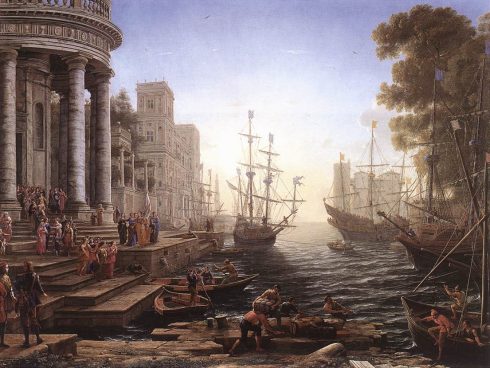 Once upon a time, there was once a just and most Christian King of Britain, called Maurus. To him and to his wife Daria was born a little girl, the fairest creature that this earth ever saw. She came into the world wrapped in a hairy mantle, and all men wondered greatly what this might mean. Then the King gathered together his wise men to inquire of them. But they could not make known the thing to him, for only God in Heaven knew how the rough robe signified that she should follow holiness and purity all her days, and the wisdom of Saint John the Baptist. And because of the mantle, they called her Ursula, ‘Little Bear.’
Once upon a time, there was once a just and most Christian King of Britain, called Maurus. To him and to his wife Daria was born a little girl, the fairest creature that this earth ever saw. She came into the world wrapped in a hairy mantle, and all men wondered greatly what this might mean. Then the King gathered together his wise men to inquire of them. But they could not make known the thing to him, for only God in Heaven knew how the rough robe signified that she should follow holiness and purity all her days, and the wisdom of Saint John the Baptist. And because of the mantle, they called her Ursula, ‘Little Bear.’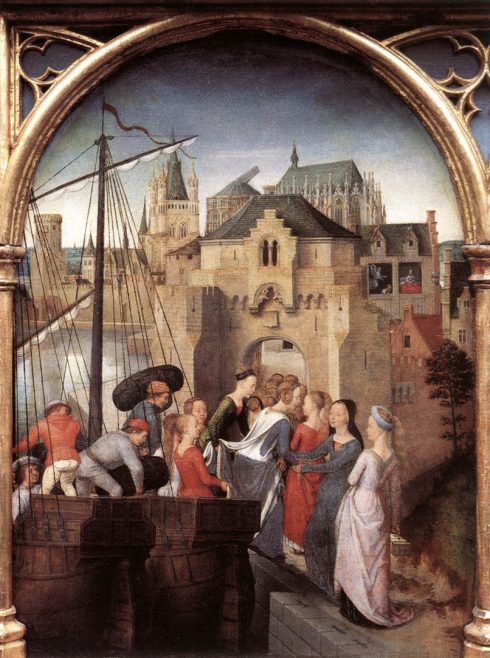 “But,” he said, “if Maurus will not hear your gentle words, open to him all my heart, and tell him that I will ravage his land with fire, and slay his people, and make himself die a cruel death, and will, after, lead Ursula away with me. Give him but three days to answer, for I am wasted with desire to finish the matter and hold Ursula in my ward.”
“But,” he said, “if Maurus will not hear your gentle words, open to him all my heart, and tell him that I will ravage his land with fire, and slay his people, and make himself die a cruel death, and will, after, lead Ursula away with me. Give him but three days to answer, for I am wasted with desire to finish the matter and hold Ursula in my ward.” And when the clear light of dawn was in the air she fell asleep. And the Angel of the Lord appeared to her in a dream, saying, “Ursula, your prayer is heard. At the sun-rising you shall go boldly before the ambassadors of the King of Over-sea, for the God of Heaven shall give you wisdom, and teach your tongue what it should speak.”
And when the clear light of dawn was in the air she fell asleep. And the Angel of the Lord appeared to her in a dream, saying, “Ursula, your prayer is heard. At the sun-rising you shall go boldly before the ambassadors of the King of Over-sea, for the God of Heaven shall give you wisdom, and teach your tongue what it should speak.”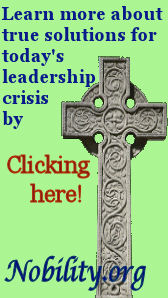 When it was day, Ursula rose to bless and glorify the name of God. She put on for covering and for beauty an enwrought mantle like the starry sky, and was crowned with a coronet of gems. Then, straightway passing to her father’s chamber, she told him what grace had been done to her that night, and all that now was in her heart to answer to the ambassadors of Over-sea. So, though long he would not, she persuaded her father.
When it was day, Ursula rose to bless and glorify the name of God. She put on for covering and for beauty an enwrought mantle like the starry sky, and was crowned with a coronet of gems. Then, straightway passing to her father’s chamber, she told him what grace had been done to her that night, and all that now was in her heart to answer to the ambassadors of Over-sea. So, though long he would not, she persuaded her father.